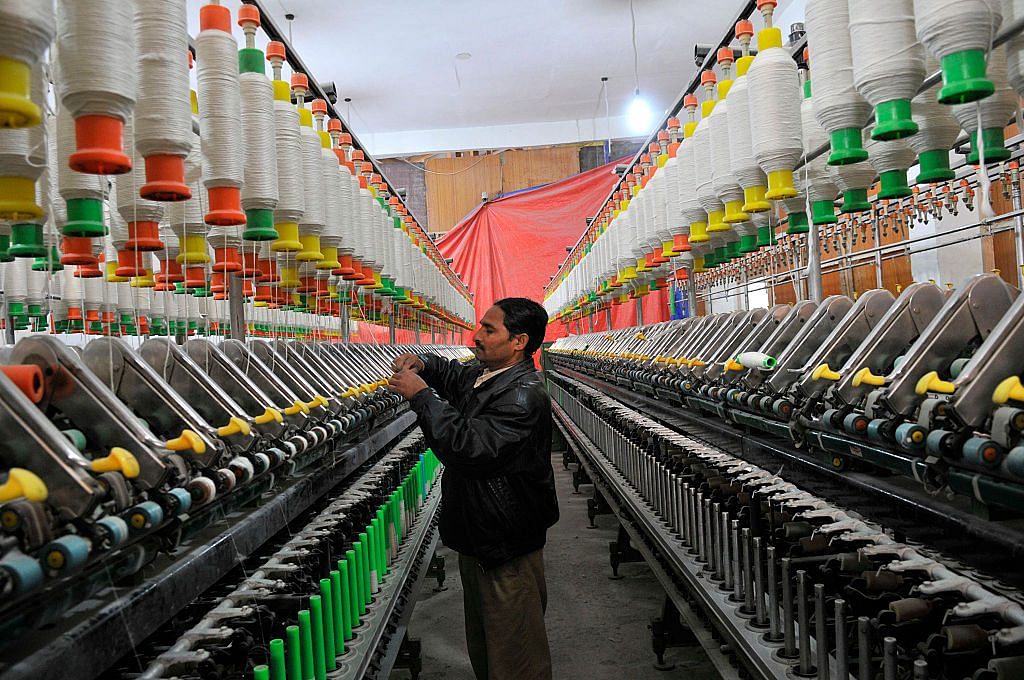Higher GDP numbers for Q2 are good news, but an improvement of 0.6 per cent over the previous quarter is practically within the range of statistical error
Everything is relative — after all, Delhiites rejoice when the air quality is “very poor”.
In that sense, a GDP growth rate of 6.3 per cent in the second quarter of financial year 2017-18, while a pale shadow of last year’s 7.5 per cent, has certainly given the government some much-needed breathing space.
Following a five-quarter run of continuously declining growth rates, this is definitely good news, at least for the dented reputations of forecasters — they had made a similar prediction last quarter, only for the growth rate to stall at 5.7 per cent.
In a nation obsessed with ‘required run rates’, our fixation with a ‘victorious’ six-plus quarterly growth rate or a ‘disastrous’ sub-six figure is understandable (the ‘Lakshman rekha’ used to be 8 per cent, but that was a different era).
However, how much does the figure matter for the real economy and the proverbial common man? Hardly, particularly when treated in isolation.
While there is definitely a difference between an eight per cent average GDP growth rate over a period of three to five years versus a five per cent rate, a single quarterly figure in isolation improving over the previous one by 0.6 per cent is practically within the range of statistical error in measuring the slippery concept.
As any introductory macro textbook would, or at any rate should, emphasise, the GDP is at best an imperfect attempt at measuring the value added in the economy, triangulating it from three perspectives – spending, earning, and production. For a country with a massive informal economy, its accuracy in reflecting on-the-ground economic transaction has always been severely limited.
More recently, however, a new element has been added to it. Seen over a longer horizon, the changes and experimentations of the current regime – demonetisation and GST most prominently – have sought to bring in greater formalisation in the economy. The jury, however, is out on whether it has actually brought the grey market activity above ground, or produced the exact opposite result of concealing entire supply chains. Either way, this would affect GDP figures considerably.
Since Q2 is the first quarter with the highly-disruptive GST in operation, the blur is likely far worse than normal. While the higher estimation error margin is understandable, one only hopes that the available discretion and pressure have not resulted in any conscious mis-estimation.
What does the figure portend for policy and politics ahead? Very little, in all likelihood. After driving the economy pretty much free of economic advice for the first half of his term, the PM now has a significant retinue of advisors – all who have seen nothing but wisdom in the policies adopted so far, of course. That may not signify, however, a softening of the practical man’s disdain for professional economists – foreign-trained or otherwise. A higher growth figure, ironically, reduces the value of economic advice.
Policy-makers would be quite right in not putting too much stock in the GDP growth figures. Votes arguably depend more on jobs than growth per se, and the two have long become almost completely unhinged in India. Between 2004-05 and 2011-12, for instance, the GDP grew cumulatively at about 54 per cent; the corresponding job growth figure was three per cent. In that sense, the seven per cent rise in manufacturing and mining in Q2 hardly compensates for the slowdown in labour-absorbing sectors like transport and hotels.
The other, bigger, reason of course is that political discourse in the country has already moved to a state where statistics are only sparingly relevant at best. While the growth figures may fuel frantic debates on social media for a couple of weeks, the voter on the ground is unlikely to be checking his/her faith against the reality of these statistics. As long as that is the case, it would be a folly to pay too much attention to these figures.
Finally, the reigning theory is that the Indian voters want to see a ‘hard-working government’ regardless of the outcome. Consequently, flaunting inputs – the latest mission, website, app – is far safer than pinning one’s political fortunes on unpredictable economic outcomes. This administration is probably the last one to forget that the last time someone boasted of shining economic outcome, his government was made to eat humble pie at the hustings.
That is as it may be. But right now, why waste an opportunity to declare victory again and point to the clear, sunlit road to “achhe din” round the corner?
Dr Rajesh Chakrabarti is Professor and Vice-Dean at the Jindal Global Business School, O.P. Jindal Global University.
